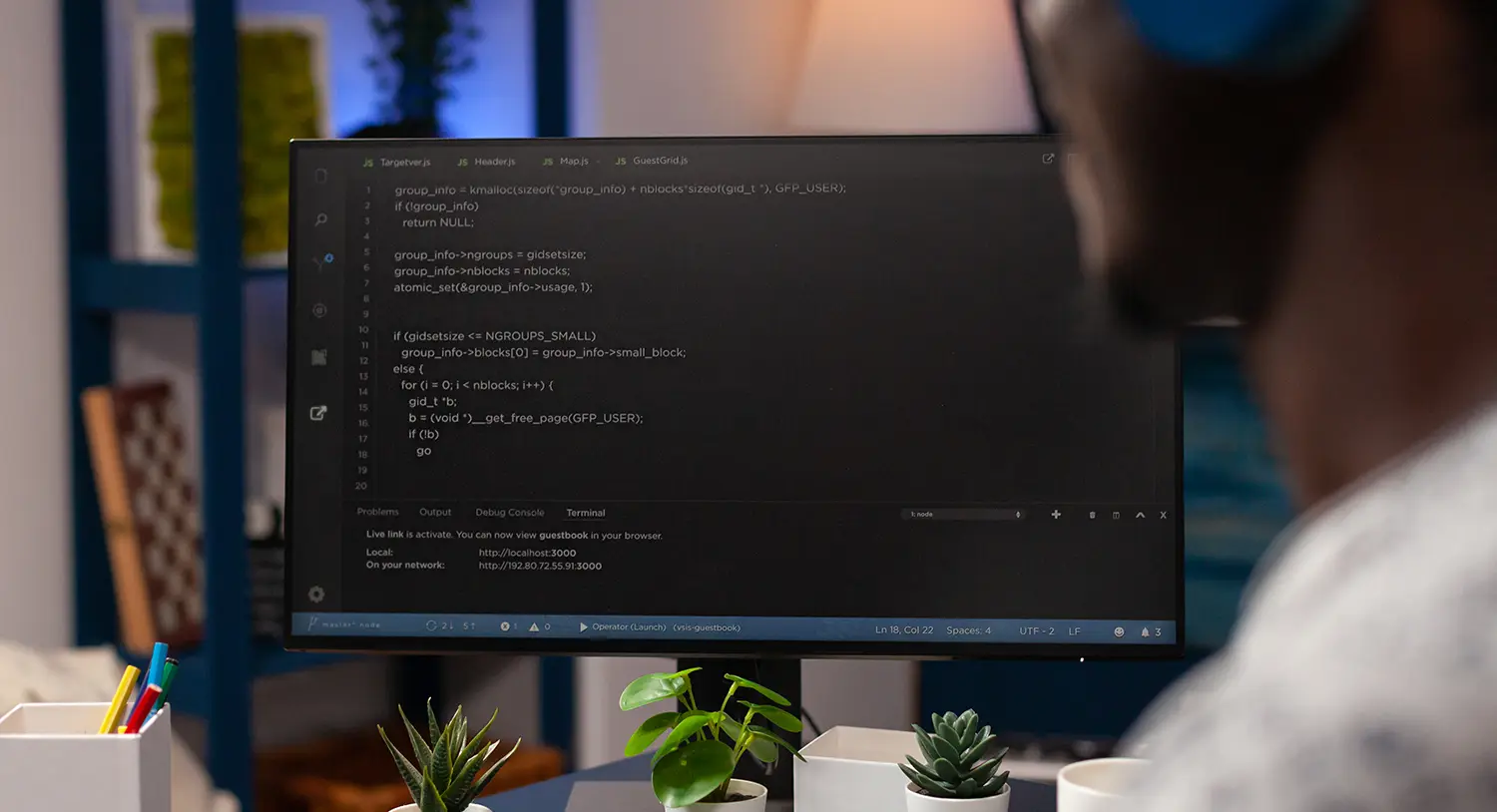It’s 2023, and the digital landscape is more competitive than ever.
Crafting search engine-friendly websites is crucial for businesses striving to stand out in the crowded online world.
Combining the power of web development and SEO services can significantly boost online visibility, user experience, and, ultimately, conversions.
So, are you ready to unlock the full potential of your online presence?
Let’s explore how to create a seamless, optimized website that both users and search engines will love.
The Importance of Web Development and Search Engine Optimization
Imagine a world where your business’s website looks stunning and performs exceptionally well on search engines, driving relevant traffic and generating leads.
That’s the power of web development and SEO services combined. In today’s digital world, it’s not enough to have a visually appealing website; it needs to be optimized for search engines to ensure online visibility and attract potential clients.
Organizations of all types, from bookstores to gourmet restaurants, can benefit from the services of SEO web design companies.
Gaining clicks in digital marketing is essential for boosting visibility and bringing more users to your pages.
The primary objectives of a newly launched website are to enhance search engine visibility by understanding search engine algorithms and drawing in potential clients.
Maintaining a balance between providing an optimal user experience and optimizing search engine visibility can be challenging for site owners when constructing a website. That’s where an SEO company comes in.
Web Development Essentials
Web development, or website development, is the backbone of any successful online presence.
It encompasses critical aspects such as responsive design, user experience, and site functionality. It is understood why SEO web design is essential in bridging the gap between aesthetics and search engine optimization in digital marketing.
With the help of skilled web designers, businesses can perfectly balance visually appealing web design and effective search engine optimization strategies.
By incorporating structural optimization, judicious keyword distribution, and internal link mapping, web developers can ensure that a website is visually pleasing and optimized for search engines.
With the right blend of SEO techniques and web design, a website can achieve higher search engine rankings and attract high-intent traffic, improving brand recognition and increasing conversions.
SEO Services for Better Rankings in Search Engines
Search engine optimization (SEO) is the key to unlocking higher rankings and driving organic traffic to your website.
An SEO web design company starts by:
- Evaluating the existing website for potential improvements
- Conducting keyword research to identify relevant terms
- Incorporating them into the website content
- Implementing a neat, inviting layout with distinct categories for different genres of products or services
- Ensuring a superior user experience with rapid page loading, a streamlined checkout process, and easily accessible customer support.
Investing in SEO services aims to enhance organic search engine rankings and generate leads.
By optimizing a website for search engine rankings, it can attract visitors with high intent, which can ultimately lead to improved brand recognition and increased conversions.
Integrating Web Development and SEO Strategies
Integrating web development and SEO strategies is the secret to creating a successful, search engine-friendly website.
By combining the strengths of both disciplines, you can achieve maximum results regarding search engine rankings and online presence. This approach ensures that your website is:
- Well-optimized
- Easy to navigate
- Attracting more visitors
- Generating leads
- Increasing conversions.
A strong connection between web development and SEO is crucial for a well-designed and SEO-friendly website. This connection can lead to benefits such as:
- Enhanced user experience
- Higher search engine rankings
- Increased website traffic
- Cost-efficiency
Collaboration Between Teams
Teamwork is the fuel that drives successful web development and SEO projects.
A cohesive collaboration between web developers and SEO specialists is vital for creating high-quality websites that perform well on search engines. Working closely together ensures the website has adequate content for search engines to rank it efficiently while maintaining a user-friendly design for visitors.
Effective communication and collaboration can mitigate the challenges of having distinct teams for SEO and web development.
By working together, web developers and SEO specialists can create an attractive and successful website that caters to user experience and search engine visibility.
Balancing Aesthetics and Optimization
One of the most critical aspects of creating a search engine-friendly website is striking the right balance between aesthetics and optimization.
A visually appealing design is essential for attracting and retaining users, but it must also be optimized for search engines to ensure the website ranks well in search results.
To achieve this balance, consider utilizing the following strategies:
- Implement a responsive design to ensure your website is mobile-friendly and accessible on all devices.
- Optimize images by compressing them and using the appropriate file formats to improve loading speeds.
- Create a user-friendly navigation structure that is intuitive and easy to navigate. By integrating web development and SEO best practices, you can optimize your website for search engines and user experience, leading to increased traffic and conversions.
Key Components of SEO-Friendly Web Design
Creating an SEO-friendly web design goes beyond just incorporating relevant keywords into your content. Several key components contribute to an SEO-friendly website design, including mobile responsiveness, fast loading speeds, and user-friendly navigation.
By focusing on these aspects, your website will rank higher in search engine results and provide a better user experience for your visitors.
Implementing the correct SEO services into your web development projects can drive organic search traffic to your website, cost-effectively generate leads, and establish your company as an authority in your industry.
With the right blend of web development and SEO services, your website will be fully optimized for users and search engines, ensuring a successful online presence.
Mobile Responsiveness
Mobile responsiveness is essential for user experience and search engine rankings in today’s fast-paced digital world. Ensuring your website is optimized for all devices enhances user experience and increases visibility in search engine results.
To guarantee mobile responsiveness, use a responsive design, optimize images for mobile devices, and employ mobile-friendly navigation. By focusing on these elements, you can provide an enjoyable browsing experience for your visitors, regardless of the device they are using.
Fast Loading Speeds
Website loading speeds significantly impact user experience and search engine performance. Slow-loading websites can drive away potential customers, leading to high bounce rates and lost opportunities.
Optimizing your website for faster loading speeds improves user experience and increases the likelihood of better visibility in search engine results.
Various methods can be utilized to optimize web speeds, such as optimizing images, minifying CSS and JavaScript files, and leveraging browser caching. By improving your website’s loading speeds, your website will be more appealing to both users and search engines, ultimately leading to higher rankings and increased traffic.
Intuitive navigation is crucial for improved user engagement and better SEO outcomes. A well-structured website with easy-to-navigate menus and clear calls to action can significantly enhance the user experience and encourage visitors to explore your website further.
In addition to improving user experience, user-friendly navigation also helps search engines understand the content of your website better, allowing them to index and rank your website more effectively.
By creating a website with clear, easy-to-navigate menus and an intuitive layout, you can improve user engagement and search engine performance, resulting in a more successful online presence.
Essential SEO Services for Web Development Projects
Incorporating essential SEO services into your web development projects can significantly enhance your website’s visibility, traffic, and conversions.
These services include keyword research, targeting, on-page optimization, link building, and off-page SEO. By integrating these critical SEO services into your web development process, you can ensure that your website is fully optimized for search engines and ready to attract high-intent traffic.
Remember, an effective SEO strategy is an ongoing process that requires consistent monitoring and adjustments to stay ahead of the competition.
By staying updated on the latest SEO trends and continuously optimizing your website, you can maintain your search engine rankings and continue to drive targeted traffic to your website.
Keyword Research and Targeting
Identifying and targeting relevant keywords is crucial for creating content that meets user intent and optimizing overall website performance.
By conducting proper keyword research, you can discover the phrases and words potential customers use to search for your business’s offerings. This not only helps you enhance your website’s visibility but also allows you to gain a better understanding of your target audience.
Keyword research and targeting involve identifying pertinent keywords, assessing their search volume and competition, and targeting them in website content and structure.
Utilizing keyword research tools, competitor analysis, and keyword mapping can help ensure that your website is optimized for the most relevant keywords and that your content is current and applicable to your intended audience.
On-Page Optimization
On-page optimization is optimizing individual web pages for search engines, including meta tags, headings, and content. By focusing on these elements, you can help search engines better understand the content of your pages, thus improving their ranking in search engine results.
Optimizing your content for search engines involves:
- Utilizing keywords and phrases that are pertinent to the page’s topic
- Ensuring that the content is arranged in an easily understandable format
- Routinely updating the content to guarantee its continued relevance and timeliness.
Proper website optimization can achieve higher search engine rankings, attract more organic traffic, and increase website visitors.
Link Building and Off-Page SEO
Acquiring high-quality backlinks and implementing off-page SEO strategies are essential for improving your website’s authority and rankings in search engine results.
Link building involves securing authoritative backlinks from external websites, while off-page SEO involves optimizing your website’s content and structure to enhance its visibility in search engine results.
The benefits of link-building and off-page SEO include the following:
- Enhanced search engine rankings
- Amplified traffic
- Superior site metrics and SEO scores
- Enhanced credibility and reputation
- Increased sales and revenue generation possibilities
- Perpetual promotion for your website
Implementing effective link-building and off-page SEO strategies can significantly boost your website’s online presence and search engine performance.
Choosing the Right Web Development and SEO Service Provider
Selecting the proper web development and SEO service provider ensures your website’s success. The ideal provider should have a proven track record of delivering high-quality results and a deep understanding of the latest SEO trends and best practices.
When evaluating potential service providers, consider their expertise and experience, pricing and packages, and customer reviews.
By carefully assessing these criteria, you can find the perfect web development and SEO service provider to help you create a search engine-friendly website that attracts high-intent traffic and generates leads for your business.
Evaluating Expertise and Experience
Assessing the expertise and experience of potential web development and SEO service providers is essential for ensuring the highest quality results. When evaluating potential providers, consider factors such as:
- Qualifications
- Certifications
- Experience
- References
Additionally, it is crucial to examine the individual’s ability to collaborate with teams, their communication skills, and their capacity to meet deadlines.
By thoroughly assessing the expertise and experience of potential service providers, you can ensure that your website will be fully optimized for search engine visibility and performance.
Comparing Pricing and Packages
Comparing pricing and packages is critical in selecting the best web development and SEO service provider for your needs. This allows you to find cost-effective SEO services that fit within your budget and meet your specific requirements.
The pricing and packages available may differ depending on the SEO service provider. Standard pricing models include flat-rate, hourly, and subscription-based, while standard packages include essential, classic, and premium.
By comparing costs and service offerings, you can find the best value for your investment and ensure your website receives the high-quality optimization services it needs to succeed.
Measuring the Success of Web Development and SEO Services
Tracking the performance of your web development and SEO services is essential for monitoring progress, pinpointing areas for improvement, and optimizing strategies for better outcomes. By keeping an eye on key performance indicators (KPIs) such as:
- Website traffic
- Rankings
- Conversions
- Customer satisfaction
You can gain valuable insights into the effectiveness of your online efforts.
Remember, success in web development and SEO is an ongoing process that requires constant monitoring and adjustments. Continuously analyzing metrics and making necessary changes can help you stay ahead of the competition and ensure your website remains optimized for the ever-changing digital landscape.
Key Performance Indicators (KPIs)
Utilizing key performance indicators (KPIs) can help you measure the success of your web development and SEO services. Essential KPIs include:
- Website traffic
- Website performance
- Search engine rankings
- Conversions
By tracking these KPIs, you can gain insights into your website’s progress and identify improvement areas.
Monitoring KPIs is also crucial for validating your web development and SEO services investment.
By demonstrating the value of these services, you can justify your marketing budget and allocate resources more effectively, ensuring a successful and profitable online presence for your business.
Analyzing Metrics and Adjusting Strategies
Consistently analyzing performance data is vital for optimizing your website and SEO strategies. By monitoring key metrics such as:
- Website traffic
- Search engine rankings
- Click-through rates
- Conversion rates
- Bounce rates
You can identify areas of improvement and make necessary adjustments to your strategies.
To make data-driven adjustments to your system, follow these steps:
- Analyze the data
- Identify areas of improvement
- Make changes to your website
- Test the results
By following this process, you can ensure that your website remains optimized for search engines and users, leading to increased traffic, higher rankings, and, ultimately, greater success in the digital world.
Summary
In conclusion, combining web development and SEO services is essential for creating a search engine-friendly website that attracts high-intent traffic and generates leads.
By focusing on critical components such as mobile responsiveness, fast loading speeds, and user-friendly navigation, and by selecting the right service provider, you can ensure that your website ranks well in search engine results and delivers an exceptional user experience.
Stay ahead of the competition in 2023 by continuously monitoring your website’s performance, analyzing metrics, and adjusting your strategies to maintain a successful and profitable online presence.
Frequently Asked Questions
SEO (or Search Engine Optimization) makes a website or content more visible on search engines like Google. Web Development refers to the design and creation of a website, taking steps to ensure it is optimized for search engine rankings. SEO and Web Development are powerful tools for any business to increase visibility and gain customers.
Yes, web developers can do SEO as they have the technical knowledge to implement changes effectively and familiarize themselves with the latest best practices.
They understand the importance of optimizing a website for search engine visibility and can make the necessary changes to ensure it is properly indexed and ranked.
An SEO agency optimizes webpages to increase their rankings in search engines, utilizing on and off-page tactics. Professional results guarantee higher visibility and an improved online presence for businesses.
Measure success by monitoring website traffic, search engine rankings, conversions, and customer satisfaction to evaluate progress and inform future actions.










